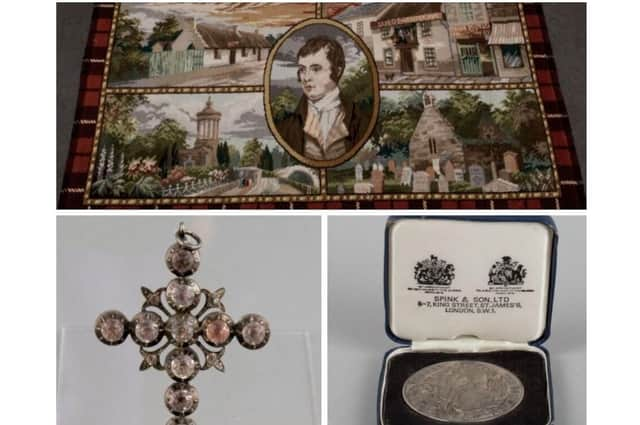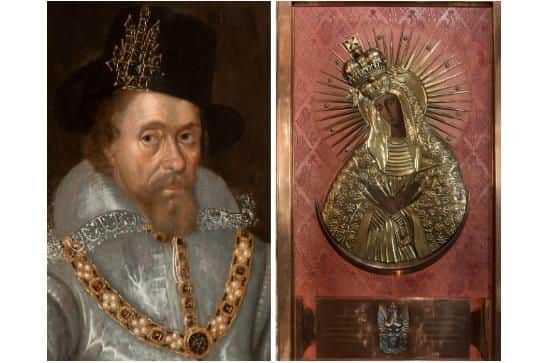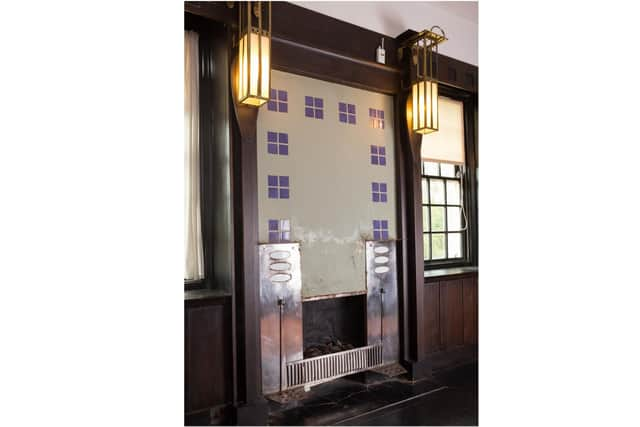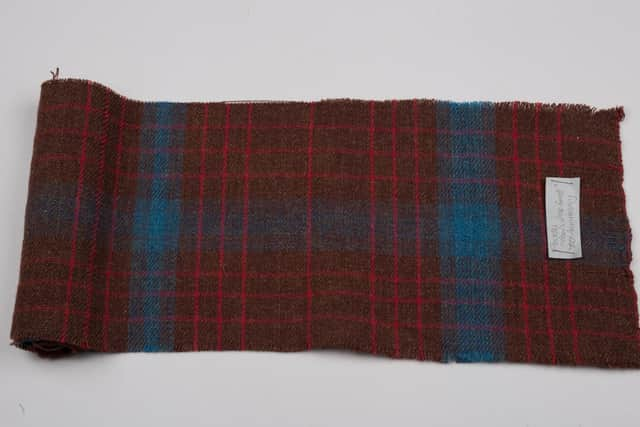The National Trust for Scotland treasures that tell the country’s story


Project Reveal at the National Trust for Scotland has taken two years to complete, with the task to audit every single item in its collection the biggest piece of work of its kind undertaken by the charity.
From a gemstone cross gifted by Bonnie Prince Charlie to his daughter Charlotte to a portrait of James VI and a Charles Rennie Mackintosh fireplace, the stars of the National Trust for Scotland collection have long been cherished.


But, from Project Reveal emerged a more diverse picture of items held in almost 50 properties that help to illuminate the lives of those who lived and worked there.
Among the more unusual finds were a collection of stuffed dancing frogs, a single deer leg found wrapped up in a cupboard and 1,000 samples of tartan which nobody knew were there.
A telescope was found at Brodie Castle after a random key tagged "mahogany box, golden key" was put to use for the first time in a long time, with the finds helping to tell the lost stories of those who lived and worked at the properties.
Susanna Hillhouse, Head of Collection Services at the National Trust for Scotland, led and devised Project Reveal.


She said: "We have a very large collection that is spread across Scotland over around 50 properties. We had information on all these things but in fairly disparate places.
"We had a database but we were aware there were gaps. For example, a dinner service - we would have one record for this but the set might contain 52 pieces.
"The project was driven by a desire to audit and fully understand the scale and significance of the collection, but there is also an opportunity to raise awareness of our collection too."
Over the past two years, 26 staff have been at work at almost 50 properties, from Hugh Miller's Birthplace Cottage & Museum in Cromarty to Fyvie Castle, Garden & Estate in Aberdeenshire and Culzean Castle & Country Park in Ayrshire.


Here, painstaking cataloguing work was carried out to photograph, measure and document every item held.
The vast majority of these items have been donated along with the properties where they can be found. Many of them are on show where they were last left by their previous owners.
Before Project Reveal began, there were 60,000 records in the database of objects owned by the National Trust for Scotland.
Now, around 100,000 entries exist after every single item gained its own record.


Ms Hillhouse said: "People were working in often remote locations in a total of 47 properties going from somewhere the size of Fyvie Castle in Aberdeenshire to Hugh Miller's Birthplace Cottage in Cromarty.
“People were working in all weathers, often with dubious broadband connections. In terms of scale and geography, it was very ambitious.
“You are also looking at a real variety of items in the collection, from fine art to furniture to more ordinary domestic objects.”
The Project Reveal staff were often working front of house amongst the visitors to the properties given most of the National Trust for Scotland collection is on show.
Ms Hillhouse added: "In museums, you might find that around 80 percent of the collection is in storage, where it is used for research.
"We have over 80 per cent of our collection of show. This was another challenge for us, to do the work in situ."
Other interesting and unusual objects found by Project Reveal include Grace "the unloved doll" who was found in Angus, a game that teaches children how to read music, and the Christmas decorations belonging to the Dalrymple family at Newhailes in Musselburgh.
The wedding teapots for the women of Kilbarchan were also discovered at Weaver's Cottage in the village.
Ms Hillhouse said that it was often the ordinary everyday objects in the collection, rather than the fine art, that fascinated.
She said: "We didn't find any priceless treasures or a lost Leonardo Da Vinci. Of course, everyone was hoping that we would find something like that
"I think what we discovered was people's real interest in the day to day objects, the domestic items.
"The team treated everything in our collections the same, from the fine art to the items found in the kitchens and the bell panels in the servants quarters.
"People can relate to these, they are tangible pieces of the past. When we look at these grand houses, sometimes it is the 'below stairs' stories that people have a more personal response to.
"These stories have a real human interest, they are the human histories of running these grand houses. These houses are not just about the people sitting in the drawing room drinking tea, they are also very much about the people who were scrubbing the stairs and preparing the food."
The next phase of Project Reveal will be to take all the information gathered and to use it to help people plan their visits to National Trust for Scotland properties. It is hoped to make the digital database fully accessible to the public so people can explore their own interests through the contents of the collection.
Ms Hillhouse added: "Sometimes in the collection, the most important thing is not the most expensive thing. To us, the value to us of an object is its ability to evoke a feeling, or its potential to tell a story."
Interested in exploring the vast National Trust for Scotland collection? You can do all this and more with a National Trust for Scotland membership. Providing access to hundreds of adventures and new experiences from just £4 per month. Visit: www.nts.org.uk/join